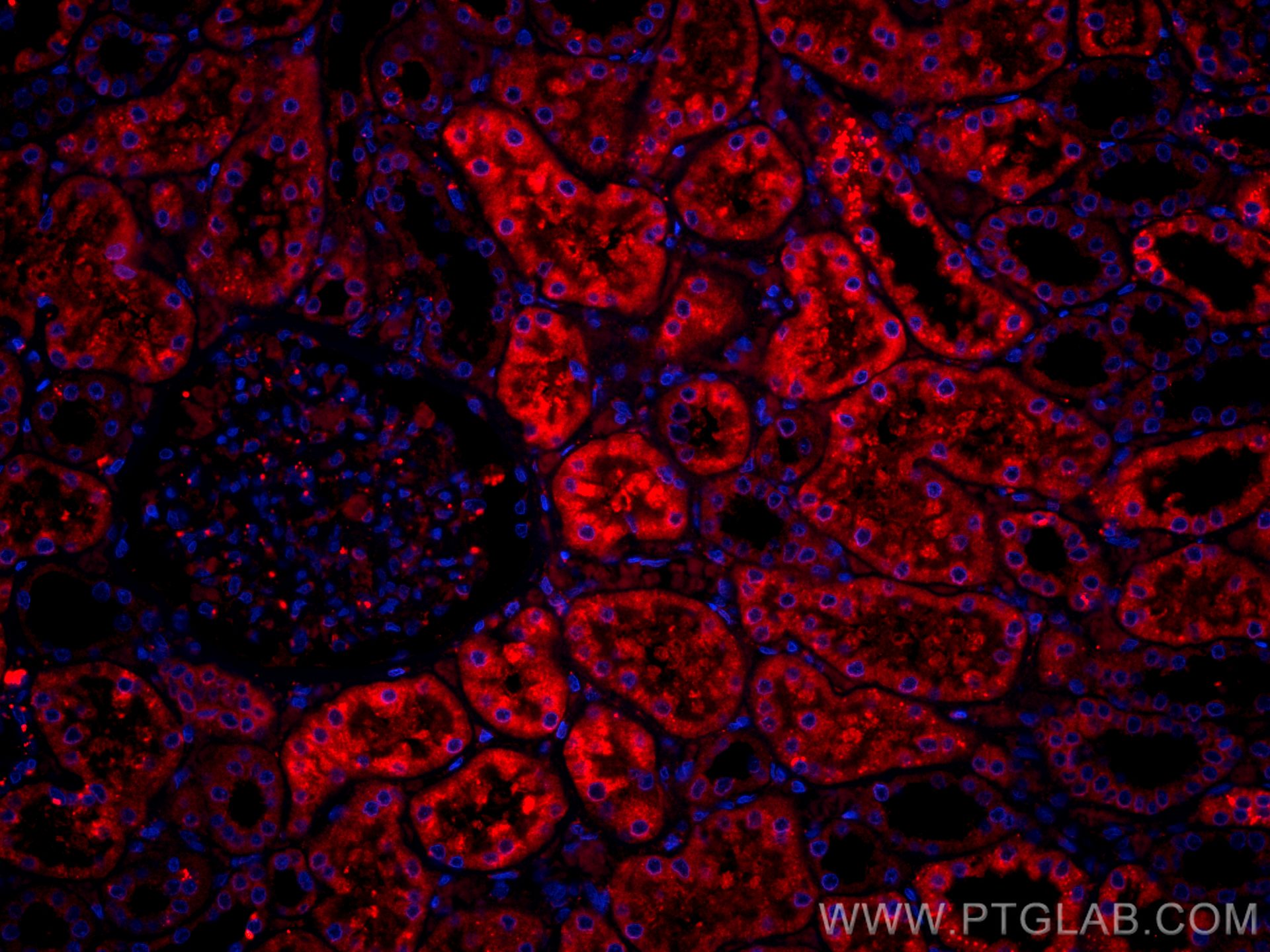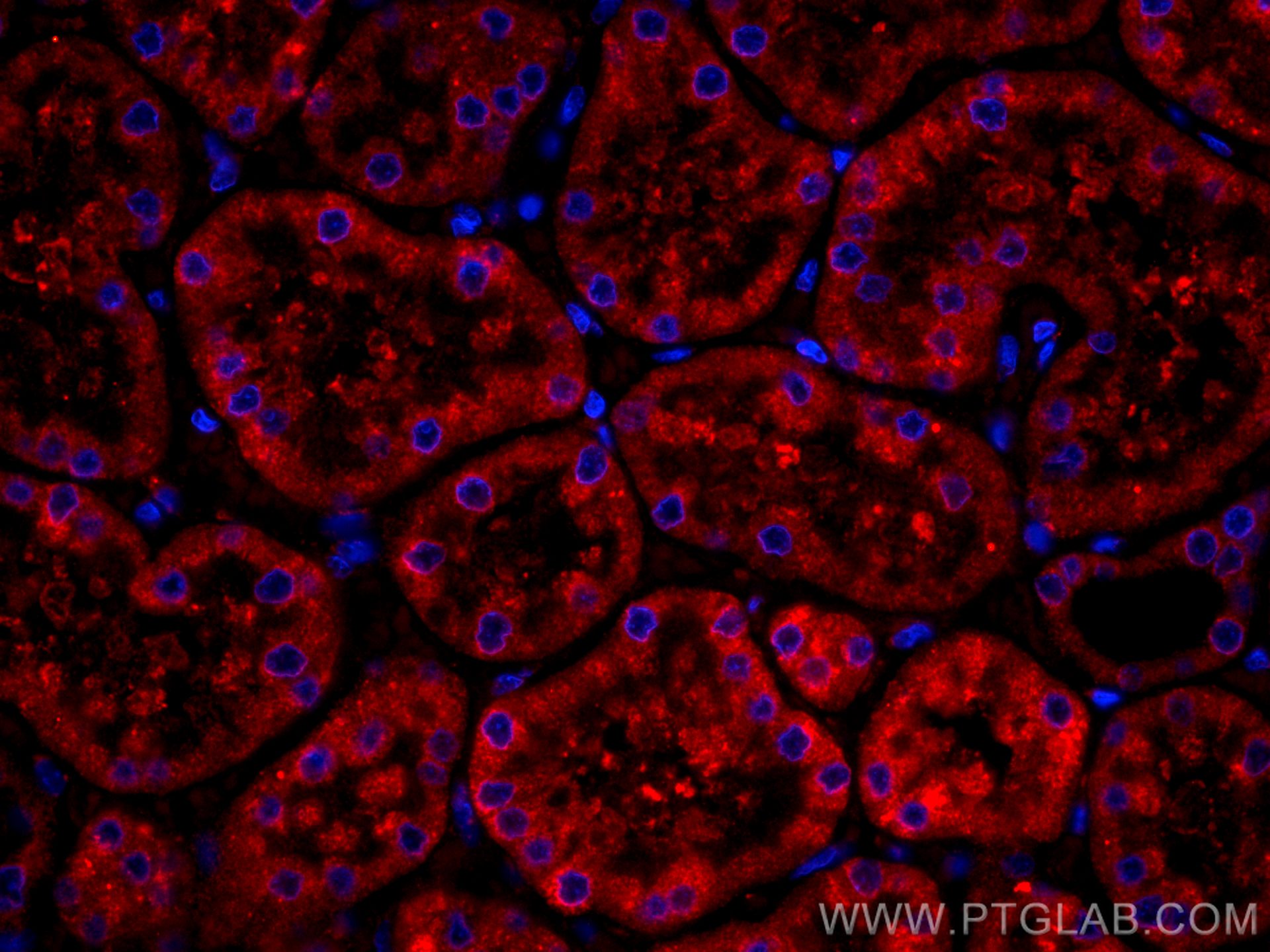Anticorps Monoclonal anti-BBS5
BBS5 Monoclonal Antibody for IF-P
Hôte / Isotype
Mouse / IgG1
Réactivité testée
Humain, souris
Applications
IF-P
Conjugaison
CoraLite®594 Fluorescent Dye
CloneNo.
4G8E12
N° de cat : CL594-66136
Synonymes
Galerie de données de validation
Applications testées
| Résultats positifs en IF-P | tissu rénal humain, |
Dilution recommandée
| Application | Dilution |
|---|---|
| Immunofluorescence (IF)-P | IF-P : 1:50-1:500 |
| It is recommended that this reagent should be titrated in each testing system to obtain optimal results. | |
| Sample-dependent, check data in validation data gallery | |
Informations sur le produit
CL594-66136 cible BBS5 dans les applications de IF-P et montre une réactivité avec des échantillons Humain, souris
| Réactivité | Humain, souris |
| Hôte / Isotype | Mouse / IgG1 |
| Clonalité | Monoclonal |
| Type | Anticorps |
| Immunogène | BBS5 Protéine recombinante Ag6844 |
| Nom complet | Bardet-Biedl syndrome 5 |
| Masse moléculaire calculée | 39 kDa |
| Numéro d’acquisition GenBank | BC044593 |
| Symbole du gène | BBS5 |
| Identification du gène (NCBI) | 129880 |
| Conjugaison | CoraLite®594 Fluorescent Dye |
| Excitation/Emission maxima wavelengths | 588 nm / 604 nm |
| Forme | Liquide |
| Méthode de purification | Purification par protéine G |
| Tampon de stockage | PBS with 50% glycerol, 0.05% Proclin300, 0.5% BSA |
| Conditions de stockage | Stocker à -20 °C. Éviter toute exposition à la lumière. Stable pendant un an après l'expédition. L'aliquotage n'est pas nécessaire pour le stockage à -20oC Les 20ul contiennent 0,1% de BSA. |
Informations générales
BBS5 encodes a protein that has been directly linked to Bardet-Biedl syndrome. Bardet-Biedl syndrome (BBS) is an autosomal recessive condition characterised by rod-cone dystrophy, postaxial polydactyly, central obesity, mental retardation, hypogonadism, and renal dysfunction. Other associated clinical findings in BBS patients include diabetes, hypertension and congenital heart defects. BBS expression varies both within and between families and diagnosis is often difficult. Experimentation in non-human eukaryotes suggests that BBS5 is expressed in ciliated cells and that it is required for the formation of cilia. Alternate transcriptional splice variants have been observed but have not been fully characterized.
Protocole
| Product Specific Protocols | |
|---|---|
| IF protocol for CL594 BBS5 antibody CL594-66136 | Download protocol |
| Standard Protocols | |
|---|---|
| Click here to view our Standard Protocols |



